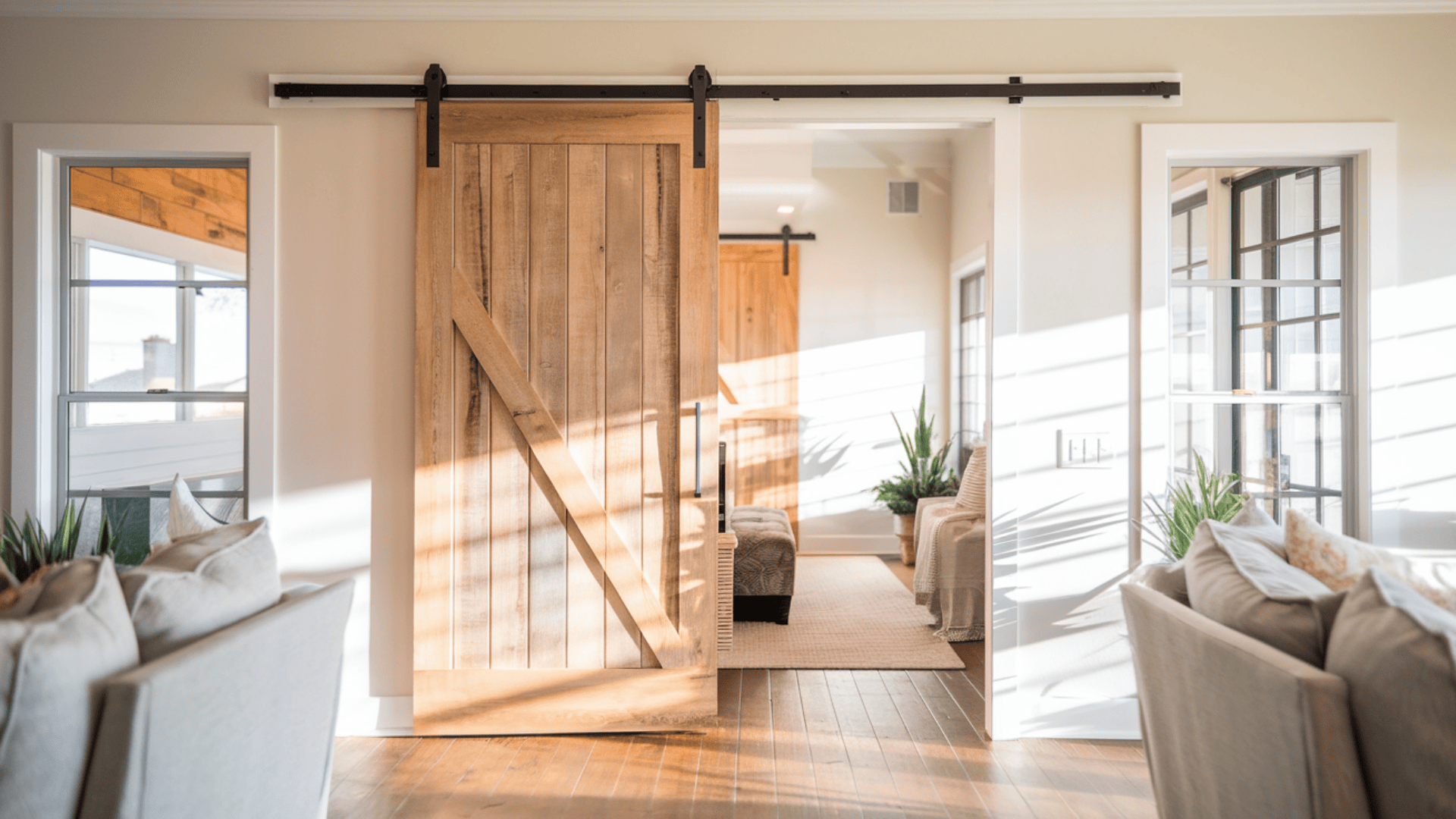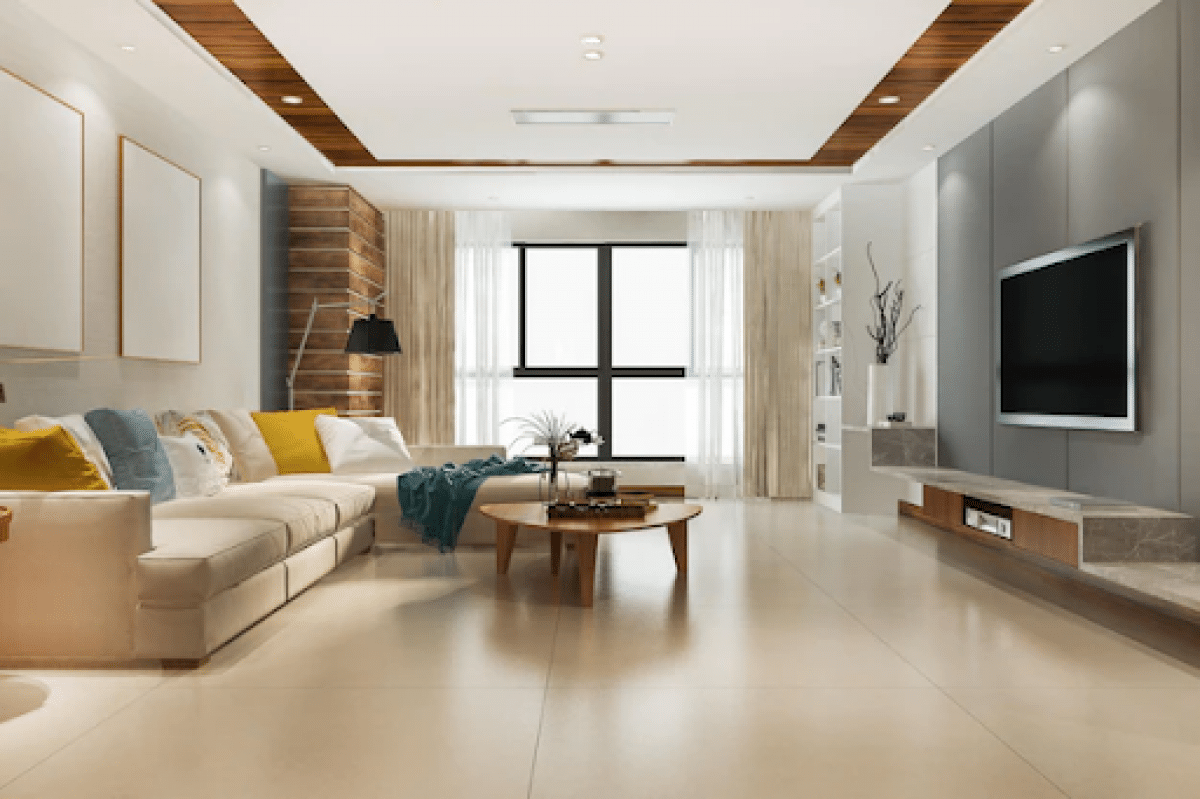A Guide to Decorating High Ceiling Effectively
I know how tricky it can be to make those tall ceilings work in your space. Most homeowners feel lost when they look up at their bare walls, unsure where to start or what to put up there. Trust me, I’ve faced this same challenge in my own home.
Here’s the good news – you don’t need fancy design skills to make your high ceilings stand out. I’ll share my tested tips to help you transform those tall walls into eye-catching features of your home.
In this guide, I’ll walk you through practical ways to decorate your high ceilings, from picking the right colors to choosing the best lighting options.
Let’s make those tall spaces feel just right!
Understanding High Ceiling
High ceilings add a unique touch to any home, but what makes them different from standard ones? Let me break it down for you.
In most homes today, you’ll find standard ceilings that sit at 8 to 9 feet from the floor. But when we talk about high ceilings, we’re looking at heights of 10 feet or more. That extra space can make quite a difference in how a room feels!
Looking back in time, high ceilings were a sign of wealth in older homes and buildings. Big rooms with tall walls kept spaces cool before air conditioning existed. These days, I see more new homes adding taller ceilings because they make rooms feel open and bright.
Here’s an interesting fact I learned: Many modern homes mix both heights – standard ceilings in bedrooms and bathrooms, with higher ones in living rooms and entryways.
This smart design choice helps create different moods in different spaces.
Different Ceiling Types & Cost Required to Create This
| Ceiling Type | Approximate Cost (Per Square Foot) | Description |
|---|---|---|
| Flat High Ceilings | $2 – $5 | Simple, high-standard ceilings without complex designs. |
| Vaulted Ceilings | $18 – $25 | A sloped ceiling that meets at a peak creates a spacious look. |
| Cathedral Ceilings | $20 – $30 | It is similar to vaulted but matches the roof’s pitch, which is more intricate. |
| Tray Ceilings | $10 – $20 | Flat ceiling with a raised center, providing a layered effect. |
| Coffered Ceilings | $25 – $45 | Sunken panel grids add depth and visual interest. |
| Beam Ceilings | $15 – $35 | Exposed beams, typically wood, add character and texture. |
| Dome Ceilings | $30 – $50 | Curved, bowl-like ceiling with complex framing requirements. |
| Barrel-Vault Ceilings | $20 – $40 | Rounded, half-cylinder style is often seen in hallways or entryways. |
| Groin-Vault Ceilings | $40 – $60 | Complex intersecting vaults are usually seen in grander spaces. |
| Cove Ceilings | $12 – $22 | Rounded edges where walls meet the ceiling, often with soft lighting. |
| Double-Height Ceilings | $5 – $12 | Ceilings that span two floors, typically in entryways. |
| Step Ceilings | $15 – $25 | Tiered ceilings with steps or levels create distinct zones. |
Pros and Cons of High Ceilings

Pros
- Better Air Flow: In my experience, high ceilings help create a natural cooling system. When it’s hot, warm air moves up and away from where people sit and walk. This means your lower living space stays fresher and cooler without extra fans.
- More Natural Light: The taller walls allow for bigger windows. I’ve noticed how this extra height lets sunlight reach deeper into rooms. Morning light fills the space better, and you need less artificial lighting during the day.
- Extra Wall Space: Those tall walls give you room to be creative. I can fit larger artwork, add floating shelves at different heights, or create beautiful gallery walls. The space above eye level isn’t wasted – it becomes a canvas for design.
- Makes Rooms Feel Bigger: Even my smallest rooms feel more open with high ceilings. The vertical space tricks your eyes into seeing a larger area. It helps prevent that cramped feeling you might get in standard-height rooms.
- Sound Distribution: High ceilings help spread sound more evenly. When I host gatherings, conversations flow better because voices carry naturally through the space.
Cons
- Higher Energy Bills: Here’s a real challenge – heating bills increase because warm air collects at the ceiling. I’ve learned to use ceiling fans in winter to push warm air back down. Still, expect to pay more for climate control.
- Harder to Clean: Simple tasks become tricky. I need special tools to dust ceiling corners or clean windows. Changing light bulbs means getting out the tall ladder. Regular maintenance takes more time and effort.
- More Paint Needed: When I repaint, I use almost double the paint of standard walls. The prep work takes longer too. Plus, those hard-to-reach spots often need touch-ups more often than lower areas.
- Echo Issues: Empty rooms with high ceilings can sound hollow. Phone calls echo, and TV sounds bounce around. I’ve found that adding soft furnishings, rugs, and wall hangings helps reduce this effect.
- Expensive to Modify: Any ceiling changes cost more due to height requirements. Installing new lights or fans needs special equipment and often professional help. Even simple updates can turn into bigger projects.
Common Tips for Decorating & Designing High Ceiling
Let me share some tested tips I use for decorating high ceilings.
1. Paint Tricks
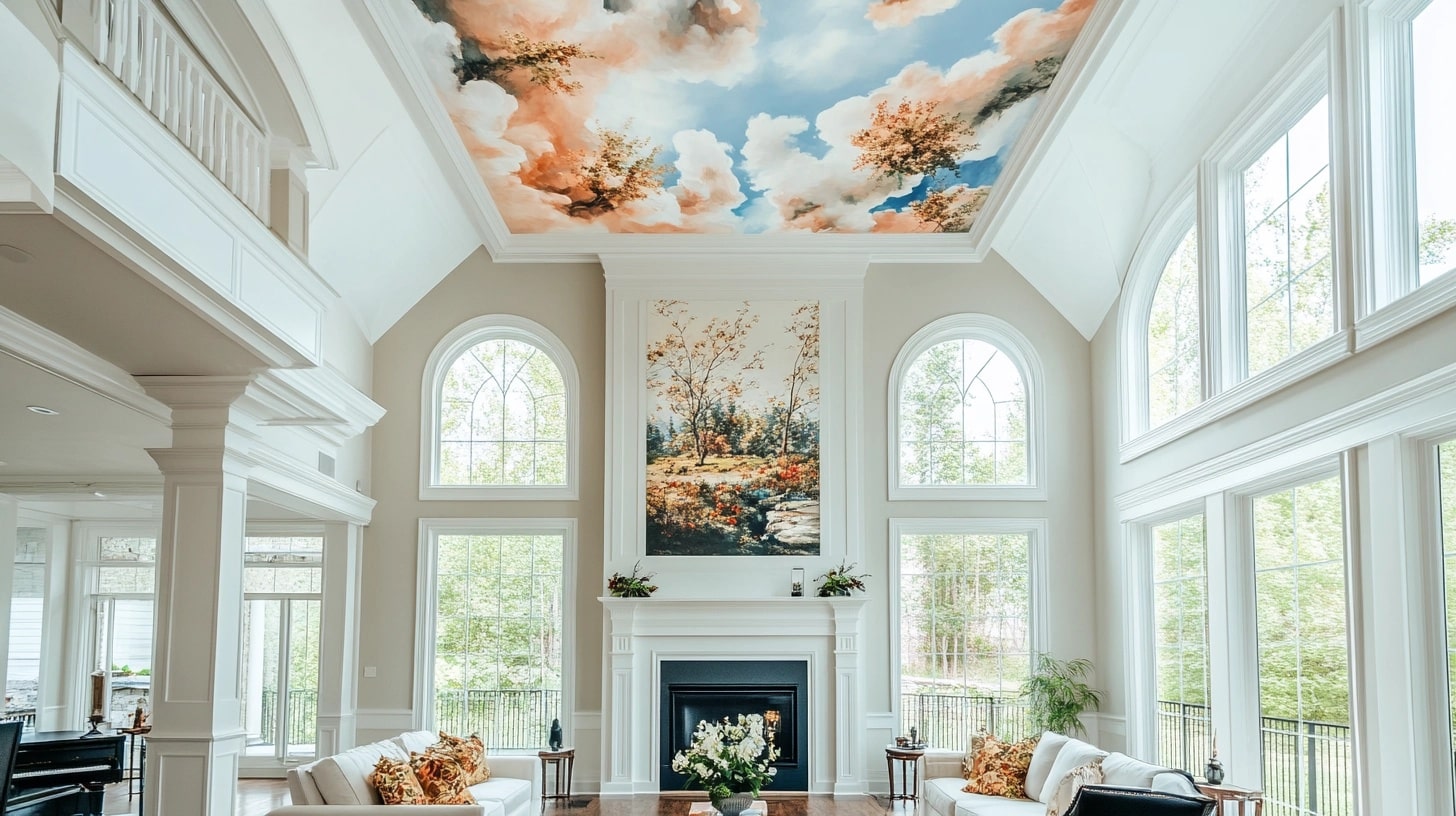
- Use darker colors on high ceilings to make them feel lower and cozier
- Paint horizontal stripes on walls to balance the height
- Keep upper walls lighter than lower sections for a clean look
2. Smart Lighting Choices
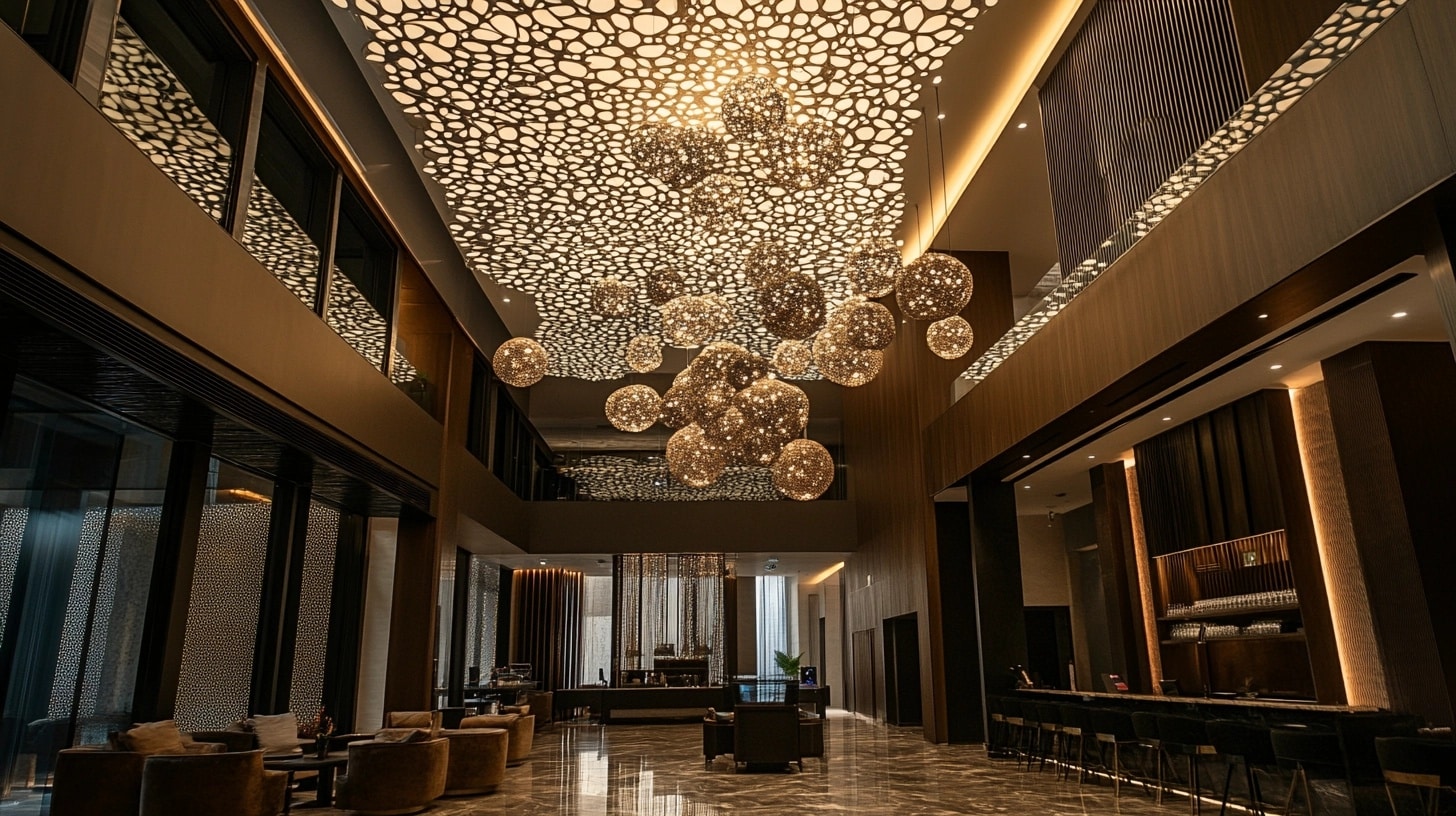
- Add wall sconces at different heights
- Install hanging lights or chandeliers to fill empty space
- Use tall floor lamps to connect floor-to-ceiling
- Place uplights in corners to create soft glows
3. Window Treatment Ideas
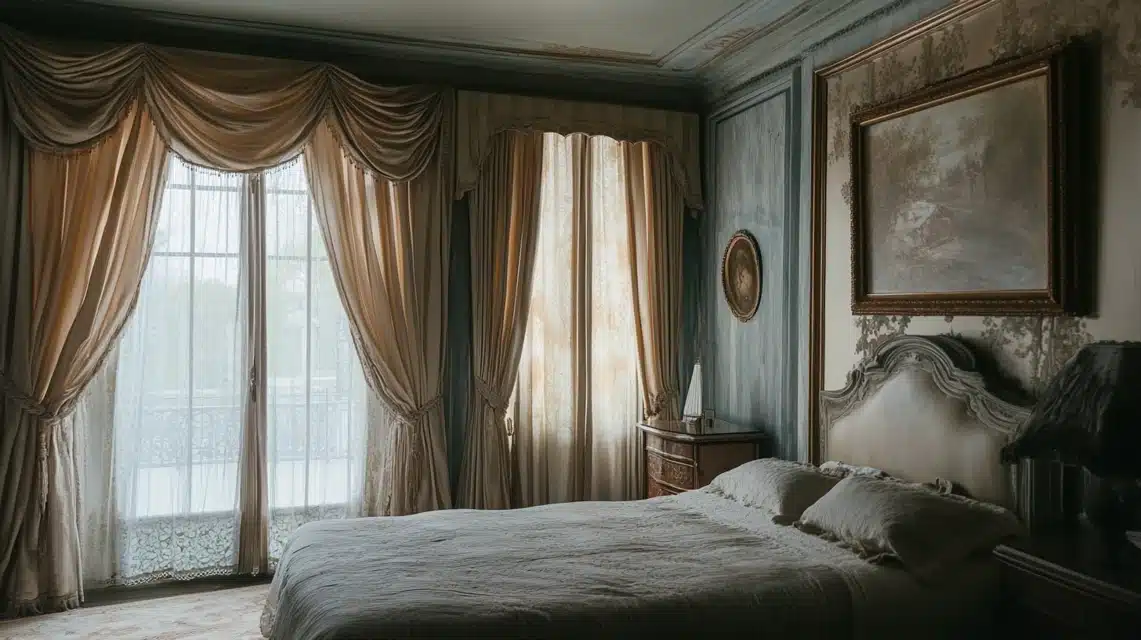
- Hang long curtains from ceiling to floor
- Install drapes higher than window frames
- Use layered window coverings for texture
4. Furniture Placement

- Mix tall and short furniture pieces
- Put high bookcases against walls
- Use tall plants in corners
- Place mirrors to reflect light and space
5. Wall Decor Strategies

- Create vertical art displays
- Install floating shelves at various heights
- Use large-scale art pieces
- Add wall moldings or trim work
6. Color Planning
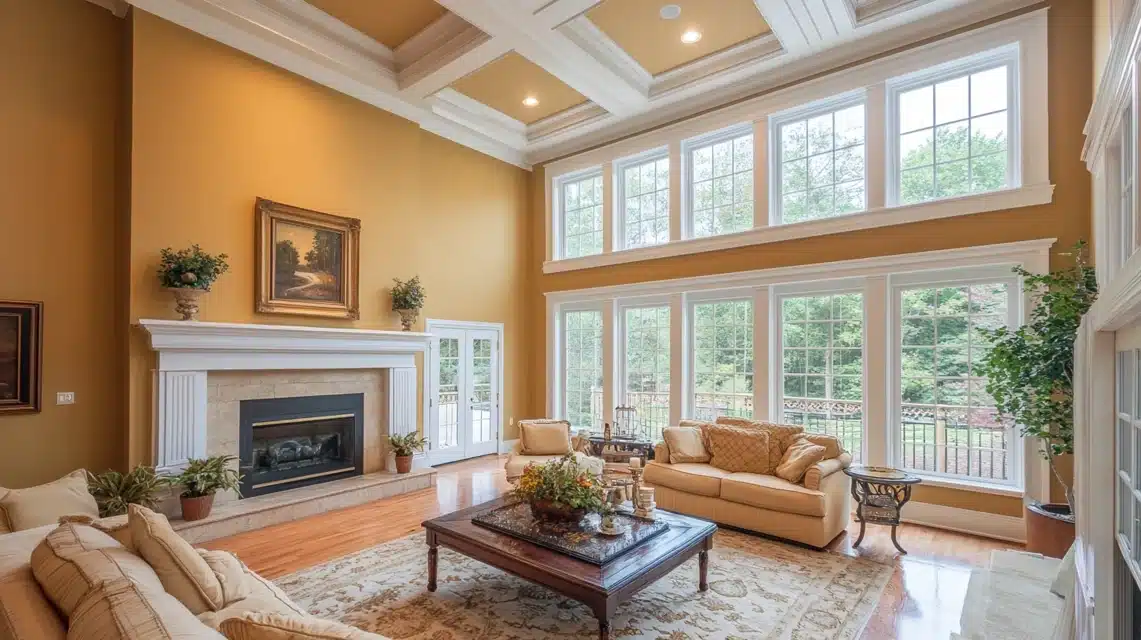
- Pick two to three main colors for the space
- Use darker shades below eye level
- Keep upper walls in softer tones
7. Texture Elements

- Mix smooth and rough textures
- Add wooden beams for warmth
- Use textured wallpaper on accent walls
Benefits of High Ceiling Designs in Different Rooms
| Room | Benefits of High Ceilings |
|---|---|
| Living Room | Allows for large windows, tall bookshelves, and statement lighting. Adds a spacious feel for family gatherings. |
| Kitchen | Extra height for hanging pots, additional cabinets, and pendant lights. Helps cooking heat rise away faster. |
| Bedroom | Creates a calming atmosphere; soft colors up high enhance tranquility. Great for adding a ceiling fan. |
| Bathroom | Improves steam control, ideal for skylights or high windows. Reduces mold risk with better airflow. |
| Entryway | It makes a strong first impression and is ideal for a statement light fixture or wall display to welcome guests. |
| Home Office | Boosts focus with more wall space for shelves and storage. Extends light reach, keeping the space well-lit. |
Is Choosing High Ceilings the Right Decision?
Let me help you decide if high ceilings are the right choice for your home.
1. Consider Your Budget
- Initial building costs may be higher
- Monthly heating bills increase
- Maintenance tools cost extra
- Light fixtures need more investment
2. Think About Your Location
- Works well in warm places
- Suits areas with lots of sunlight
- Makes sense in humid regions
- It fits local building styles
3. Look at Your Lifestyle
- Good for people who like open spaces
- Perfect if you host gatherings often
- Great for art collectors
- Suits those who want natural light
4. Check Your Time
- Need regular cleaning
- It takes longer to paint
- It needs more careful upkeep
- Requires tall ladder work
5. Consider Energy Use
- Higher heating costs in winter
- Better airflow in summer
- More space to cool or heat
- Needs smart climate control
The Final Take: I’d say high ceilings work best if you:
- Can handle extra costs
- Value open spaces
- Don’t mind some extra cleaning
- Want a brighter, airier home
Key Maintenance Tips to Follow

Conclusion
High ceilings can turn your home into something special, but they’re not for everyone. I shared these tips because I know how tricky it can be to decide if they’re right for you.
Think about your needs – do you want more light and airflow? Can you handle the extra upkeep? Are you ready for slightly higher bills? These are key questions to ask yourself.
If you choose to go with high ceilings, remember to use the right tools, keep up with maintenance, and make smart design choices. The extra space above can add real value to your home when done right.
Want to learn more about home design? Check out my other guides on smart home layouts and design tips.





